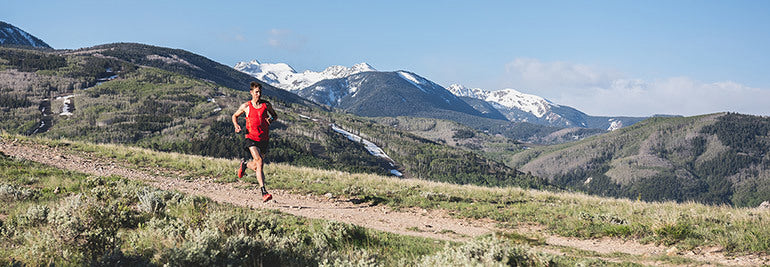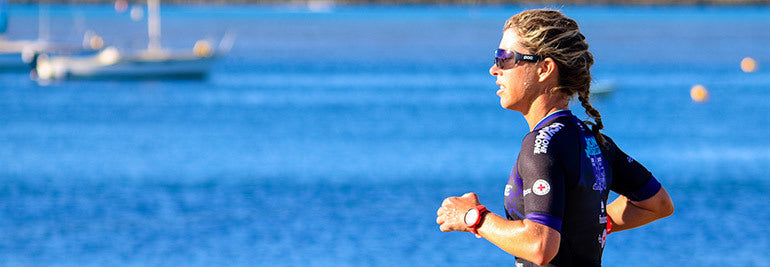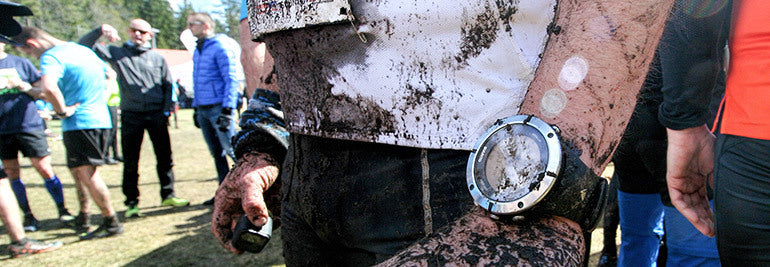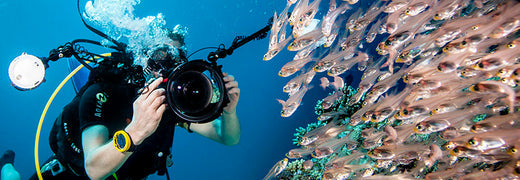

Suunto Blog

5 proven ways to improve running economy
“Running economy is the holy grail for distance runners, not a high VO 2 max,” writes Josiah Middaugh , XTERRA World Champion and a professional coach. Read on to learn more.
Running economy is the holy grail for distance runners. It was once thought that a high VO2 max was the discriminating factor for distance running performance. However, among a homogenous group of runners, VO2 max is not correlated with performance. It turns out that running economy plays a more crucial role.
For many years the Kenyans and East Africans dominated middle distance events and it was thought their aerobic capacity due to altitude training and genetics were superior, but that is not the case. Their VO2 max values were no better than world class athletes from all over the world and athletes from other endurance disciplines. Remarkably, some East Africans were able to run exceptional times with moderate aerobic capacities. The most economical distance runner ever measured could run 1500m in 3:35 with a VO2 max of only 63 ml/kg/min (Foster and Lucia, 2008).
Increase stride rate
Running mechanics can be very complex. Compared to novice runners, elite runners tend to have a shorter ground contact time, less braking forces, less vertical oscillation, less energy expended in the frontal plane, specific joint angles during phases of the run gait, and less oxygen consumed for any given pace. To think of several these things at once will probably not be helpful. Increasing stride rate can be a simple solution to a complex problem.
My former professor and world renowned running coach Dr. Jack Daniels observed that Olympic distance runners had very similar stride rates in all of the long-distance events. The stride rate he observed was over 180 steps per minute. Most novice runners tend to be closer to 160 steps per minute which causes longer ground contact time, increased braking forces, and more vertical oscillation. Visually, efficient runners experience ground contact occurring under your center of gravity (instead of out in front), less heel striking, and a smoother, less loping stride. Simply increasing stride rate without increasing pace will solve several biomechanical issues at once. As pace increases, stride length increases while stride rate remains mostly unchanged.
To master, I like to practice the quick turnover at easy to moderate speeds where it might not feel as natural. Even speeds as low as a 12 min/mi pace, it is possible to maintain a stride rate of 180 steps per minute. Think about your legs acting as wheels while your roll over the ground like road runner, rather than like pogo sticks slamming into the ground. Initially a quicker turnover might be less economical as you retrain your neuromuscular system. However, the upside will be worth it with improved running economy and less impact.
Increase mileage
Running economy has been found to fluctuate in distance runners from season to season depending on total running mileage and from year to year. In a group of elite runners, during the road racing season when mileage was higher, running economy was better compared to spring track season when mileage was lower (Kubo et al., 2010). Another study found a cumulative effect on running economy based on total running mileage in a career having a stronger effect than current running mileage (Midgley et al., 2007).
Single sport distance runners and coaches have long known the benefits from higher mileage, but simply increasing mileage linearly can lead to a slippery slope of injury, burnout, and overtraining. Although open for interpretation, these studies show the importance of consistency over time. For multi-sport athletes they imply that there may be some benefit to an off-season run focus, increasing run frequency if running is a limiter, and consistent long runs throughout the year. When increasing mileage, a conservative approach to avoid injury is to limit total mileage increases to ten percent per week, but with undulation and not linear progression.
Strength training
Strength training has the potential to improve running economy and prevent injury in a few different ways. Although running doesn't require an extremely high level of core strength, many distance runners are deficient. I like the definition of core strength as lumbo-pelvic-hip stability. With running, you are either in the air or in a single leg stance. The single leg stance requires proper timing and recruitment of this core musculature to prevent too much wasted energy. Approximately 20% of expended energy while running is spent stabilizing in the frontal plane (side to side).
Another way strength training can improve running economy is neuromuscular and structural. Replacing a portion of running volume with a small amount of heavy strength training has been shown to improve musculo-tendon stiffness, and neuromuscular efficiency. They key here is to make sure that strength training remains supplemental and replaces some of your total training volume so you aren't just increasing fatigue.
"Functional body mass uses energy but is also used to propel you forward," says Josiah Middaugh.
Lose non-functional weight
This is pretty simple and straightforward and doesn't apply to everyone. Unlike swimming, or cycling on flat ground, running economy is always dependent on total body weight. I like to think of running as a series of falls and with every stride you must lift, catch, and support your body weight. Carrying less mass will use less energy. The key here is to focus on mass that is not functional such as body fat. Small increases in lean body mass (muscle) do not affect relative running economy. Functional body mass uses energy but is also used to propel you forward, so carry what you need but not anything extra.
Perform plyometrics
Plyometric training can be a shortcut to improved running economy. Like strength training, it is important to replace a portion of training volume with plyometric training and not add it on top of your training load. Plyometrics are generally considered high intensity although most people can perform lighter versions of plyometrics called form drills. Some examples include high knees, power skipping, bounding, double and single leg hops. The mechanism has most to do with the stiffness or responsiveness of the muscle-tendon complex (Spurs, et al., 2002). A small amount can go a long way with plyometrics, so perform high intensity plyos when fresh and limit total jumps to about 200 per session. Performed 2-3 sessions per week, running economy can be improved in as little as six weeks of plyometric training (Saunders et al., 2006).
Josiah Middaugh is the reigning XTERRA Pan America Champion and 2015 XTERRA World Champion. He has a master’s degree in kinesiology and has been a certified personal trainer for 15 years (NSCA-CSCS).
Images by Matt Trappe
References
Foster, C., & Lucia, A. (2007). Running economy: the forgotten factor in elite performance. Sports Medicine, 37, 4-5, 316-319.
Kubo, K., Tabata, T., Ikebukuro, T., Igarashi, K., & Tsunoda, N. (2010). A longitudinal assessment of running economy and tendon properties in long distance runners. Journal of Strength and Conditioning Research, [E-pub ahead of print]
Midgley, A., McNaughton, L., Jones, A. (2007). Training to enhance the physiological determinants of long-distance running performance: can valid recommendations be given to runners and coaches based on current scientific knowledge? Sports Medicine, 37(10), 857-880.
Yoshida, T., Udo, M., Chida, M., Ichioka, M., Makiguchi, K., & yamaguchi, T., (1990). Specificity of physiological adaptation to endurance training in distance runners and competitive walkers. European Journal of Applied Physiology, 61, 197-201.
Saunders, P., Telford, R., Pyne, D., Peltola, E., Cunningham, R., Gore, C., and Hawley, J. (2006). Short-term plyometric training improves running economy in highly trained middle and long distance runners. Journal of Strength and Conditioning Research, 20, 4, 947-954.
Spurrs, R., Murphy, A., & Watsford, M. (2002). The effect of plyometric training on distance running performance. European Journal of Applied Physiology, 89, 1, 1-7.

How do I run?
We are happy to launch How do I run, a three-week campaign designated to make you a stronger runner! We have partnered with XTERRA World Champion and professional coach Josiah Middaugh to get you the best tips and tricks and with CTS to offer you a chance to get personal feedback on your running technique.
Learn more about running technique
Josiah Middaugh is the right man to talk to about becoming a stronger runner. Josiah is the 2015 XTERRA World Champion and also a professional coach. He certainly knows what it takes to make you run faster – or more efficient.
“Running economy is the holy grail for distance runners, not a high VO2 max,” Josiah says.
Josiah Middaugh is your running expert during the campaign.
In the first of his three articles on running technique Josiah introduces five proven ways to improve running economy. Read the article here and stay tuned for more tips and tricks in the following weeks!
Update on May 31: The second #howdoirun article is out! Read also Josiah's Intro to distance running technique
Update on June 8: Time to practice! Try Josiah's 8 Essential running form drills
Get feedback on your running
To put Josiah’s advice in action we are offering you a unique opportunity to get personal feedback from a professional running coach.
To participate get your friend to film a video clip of you running. For best results – and footage that can be analyzed – a side view is preferable. Choose a flat, straight stretch of trail or road and run at a relaxed pace.
Upload the video on Instagram and tag it with #howdoirun between May 24 and June 11. Professional running coaches Jason Koop and Adam St. Pierre from CTS will analyze the most interesting videos daily.
Three of the most inspiring videos will win Suunto Spartan Sport Wrist HR watches. You can find the detailed contest terms and conditions here.

Ueli Steck in memoriam
Ueli Steck, our long-time friend and ambassador, died in a climbing accident in the Himalayas on April 30. Ueli was not just an exceptional athlete and explorer. His humble attitude and persistence to realize his dreams was an inspiration to many – us included.
Ueli Steck, 4.10.1976–30.4.2017
We were privileged to be by Ueli’s side since 2005. We saw him grow from a speed climber in the Alps to one of the best mountaineers of his time and an exceptional endurance athlete.
Ever since Ueli’s 2008 record-breaking solo speed ascent of the north face of the Eiger Ueli Steck was regarded as one of climbing’s most spectacular talents. In 2013 he was in the limelight after making an incredibly bold solo ascent of the south face of Annapurna (8,091 m) in 28 hours – a new record. The ascent won him the Piolet d’Or, one of climbing’s most prestigious awards.
“I was at the limits of my physical and mental ability. To go to such limits changes your consciousness,” Ueli said after the expedition. Climbers regard it as one of the most significant climbs in the Himalayas in a generation.
Ueli did not do things the traditional way. He wanted to climb light to be able to move fast. To him fast meant less time spent at altitude which increased safety. But Ueli was also a purist. “It’s out of the question for me to use bottled oxygen,” he said. “I either make the summit without it or I turn back, go home and train more.”
And train he did. He was preparing for his climbs like an Olympic endurance athlete. Climbing was just one part of getting faster, being better. In fact, Ueli really fell in love with trail running and believed endurance training could be the best way for him to become even better as a mountaineer: the gains he could get by training climbing were marginal compared to the gains he could get by being in the best possible shape.
When preparing for his Everest Lhotse Traverse Ueli travelled to Khumbu Valley for high-altitude training this February. He wanted to spend time and train in high altitude to be ready for his big Himalayan challenge this spring.
And he was ready. We have never seen Ueli as confident and relaxed as he was before his travel to Everest in April. He felt that he was in the shape of his life and was really looking forward to the climbs in the highest mountains of the world.
“Working with Ueli all these years has been an inspiration; his way to see the sport, his pure way to approach the mountains and his determination in his projects pushed also us to do things better. Our long talks were filled with energy and inspiration. We have not only lost an athlete, but a friend who will always be remembered,” says Joan Sola, sport and community manager at Suunto.
It was in the mountains that Ueli felt most at home. To him the north face of Eiger was as casual as a trail in the local park is for us. That is where he felt most at home.
But no matter what the route or the mountain, Steck’s inspiration remained the same. “It’s the challenge of moving on in life,” he says. “I always want to try something I have not done before.”
And that attitude of moving forward, of making progress, is what inspired us the most in Ueli. He showed us all that dreams can come true with determination and hard work.
Ueli, may your spirit forever guard others who live their dreams on the mountains. We will miss you – and your broad smile.

A new world record! 100 triathlons in 100 days
How did the new mom pull off what is one of the greatest achievements ever in endurance sports? Dedication, planning, consistency – and plenty of mental fortitude. We interviewed Debi and her coach (and husband) John to find out what made her tick - and keep ticking.
We know it was hard – but what was the hardest?
Debi: Illness, injury… and rain. I caught a virus from Ryder [Debi and John’s one-year-old son] and that really knocked me back. Days 50–56 I was battling through a foot injury, but by day 60 I was 100% pain-free again. Other than that – rain! We had one super rainy week at the beginning, including a day with up to 85mm. There was often water up to the axles of my bike! Then of course there were the days with 40°C heat.
Debi during one of the sunnier bike legs.
Speaking of the bike, how did it survive?
John: Actually, we took it for a tune-up before the big official race day here in Port Macquarie – he took one look and said ‘what the hell have you been doing to this thing?’. Debi was really only using two gears so those were totally worn while everything else was quite clean. The bike did better than the shoes – she went through about eight pairs of shoes!
So you ran first at home in Sydney, then finished in Port Macquarie.
Yep - days 1 – 94 were at Centennial Park near our home. Then we hopped in the camper for a 5-hour drive to Port Macquarie, where she did the last six. The transition was tough – especially with a short night of sleep. But the final day – one which I did a full Ironman, not just a half.
John is Debi's husband, coach and a fellow triathlete.
That’s… not how to taper.
John: Talk about coming in with tired legs! Debi still did great – fourth in her age group and 18th overall. Not bad for a cumulative 99 days of half-distance triathlons preceding.
Debi: Yeah, the course was tough – the road is big chips, not smooth at all – but having all the people out there helped. There were about 3,000 people out on the course, and tons of spectators. That made a huge difference!
What kind of pace did you keep?
John: Well below race pace – we knew we were in for the long haul. Debi became addicted to heart rate and time. It was nothing to do with the distance – if she kept the heart rate and time, she’d finish. It was about 125–130 average running, and on the bike 110 average. That’s versus 160 during the run and 150 with the bike when fresh, tapered and race-ready.
Debi post ride with Ryder.
Other major highlights?
Debi: Breaking the world record on day 31 was a blast. We had about 70 people out with us that day. (You can read more about that day here!)
How much of it is physical vs mental?
John: After a certain point, your body adapts and the physical impact is the same. Debi went on autopilot – Her average speeds are so consistent. After that it’s all mental. Most people run on emotion, not intelligence. When you use intelligence for endurance events, you become a lot more successful – it’s a three-way conversation between body, intellect and emotion. As long as everything is going well, the body responds accordingly. When your emotional level suffers, your body suffers. You have to reason your way out of a difficult situation. We’ve likened it to the body being a computer. The software is the emotion. The processor is the intellect.
What’s next?
Debi: Lots of other ideas! John would love another go at the 100-day challenge – he’s got a couple tendons in the shoulder that need surgery first. But we feel that we work best as a team, so it’s going to be something together. There’s definitely another adventure in the works!
Watch Debi, John and Ryder cross the finish line on the final day
Main image ©witsup.com

Suunto Summit 2017 Recap
The post-race sauna and making new friends with some reindeer might have helped but really we came to realise our connection is rooted in our shared passion for sport and the outdoors.
"Meeting outdoor enthusiasts from all over the world and learning their stories and sharing our passion for different sports was truly inspiring." -Philipp Reiter, trail runner and photographer, Germany (Image by Oskar Henriksson)
"The Suunto Summit was a great experience that felt like i was a part of a family with a shared passion for the outdoors." -Arnau Martorell Sala, Spain
"The summit brought a whole new, and overwhelming sense of joy to meet so many open and strong athletic women who are excited to get out there. It was comforting to not feel alone or intimidated." Mia Morandi, USA.
"Listening to all the experiences of my fellow Suunto Summiteers has left me inspired and completely in awe…and mingling with the team behind Suunto was absolutely invaluable. It has been such a privilege to be here." -Ramon Fadli, Malaysia.
"Bravo! I’ve loved Suunto 20 years, I love you even more…" -Barbara Edelston Peterson, USA
"It really has been a unique experience and a wonderful opportunity to meet the people at the heart of Suunto and to leave Helsinki feeling part of the family. Thank you all, you guys rock!" -Tim Major, UK
We are grateful to have shared the experience with such an incredible group, and agree with one of our participants, Pelle Nyberg, from Sweden, that the "Suunto Summit captures the essence of the community."
All images by Philipp Reiter

Here are the three marine life contest winners
The three winners are Babak Davoudi from California, Ruben Castro Castillo from Spain and Kimberly Jeffries from Hawaii. Here are their pictures and stories.
Kimberly & hammerhead shark
By far the biggest myth people say about sharks is they are mindless, man eating monsters. Nothing could be farther from the truth. These are beautiful, majestic, sentient creatures that actually appreciate and return for affection over and over and over again. Jim Abernethy - Tales by Light - Happy Earth Day everyone 🌏 。 。 。 。 #shark #travel #freedive #rebreather #savesharks #subal #conservation #neverstopexploring #ocean #freediving #yourshotphotographer #oahu #explore #teamcanon #extinction #photo #hawaii #scuba #photooftheday #marine #marineconservation #photography #underwater #padi #galapagos #hammerheadshark #hammerhead #wild #suuntodive #earthday
A post shared by Kimberly (@kimberlyswimberly) on Apr 22, 2017 at 11:14am PDT
“Hammerhead sharks are among some of the most amazing ocean animals. Their head shape has evolved to act as a hydrofoil underwater and their bodies are capable of extreme maneuverability. They're absolutely beautiful to see moving underwater. Sadly, despite evolution, Scalloped hammerheads are considered endangered, with their population having decreased around 95% in the past thirty years due to over fishing and shark finning.”
“This particular photo is of a scalloped hammerhead off Darwin's Arch, Galapagos. Schools of sharks will gather to be cleaned by fish and to find mates. It's beautiful to see untouched nature like that.”
“Although this photo was shot in the Galapagos, I'm lucky enough to call Oahu home. We have crystal clear diving all year round and every island in Hawaii has a little different flavor so it's always an adventure in the water.”
–Kimberly Jeffries, California, USA
Ruben & angel shark
Ruben’s angel shark video (The same video was also shared on Instagram)
“I went diving again today and was lucky enough to meet an angel shark. They are fantastic creatures and it’s always good to see them. I think we have to protect them, and the best way to educate and teach people is through videos and images.”
“I am from Madrid, Spain, but live in Las Palmas de Gran Canaria. Usually I dive in the Canary Islands.”
–Ruben Castro Castillo, Gran Canaria, Spain
Babak & sea turtle
My favorite dive buddy of all time! Throwback to an amazing experience, diving in #turtlecanyon #Oahu and encountering with many of these giant #seaturtle #honu The average shell length of an adult honu is 3-4 feet and they weigh ~250 pounds, but they can grow to a weight of 500 pounds and their average life span could reach 80 years. #suuntodive #hawaii #scubadiving #paditv
A post shared by Babak Davoudi (@babakd) on Apr 20, 2017 at 11:24am PDT
“The picture is from my trip to Hawaii, Oahu, Turtle Canyon dive site, right after I got my open water certification and I was so excited diving in Hawaii. We saw a lot of these huge sea turtles surrounded by small fishes cleaning them. It was my first time seeing turtles that big. They are so calm and the way they swim and glide in the water looks like they are flying. Looking at their faces make me happy and smile. To me they look like ancient and prehistoric creatures.”
“I live in Irvine, California and normally dive around here in Catalina Island, Shaw's Cove, Channel Islands and sometimes going on trips to another places. I dove in Dubai, Hawaii (Molokini and Oahu). I'm getting more serious about diving, it's been my dream since I was a child to dive and it became true when I moved here to California.”
–Babak Davoudi, California, USA
Congratulations to the winners and thank you for participating and sharing your stories, everyone!
The three winners got easy-to-use, nitrox-capable, large-displayed Suunto Zoop Novo dive computers to accompany them on their future adventures.
Main image by Stephen R Woods / Suunto










































































